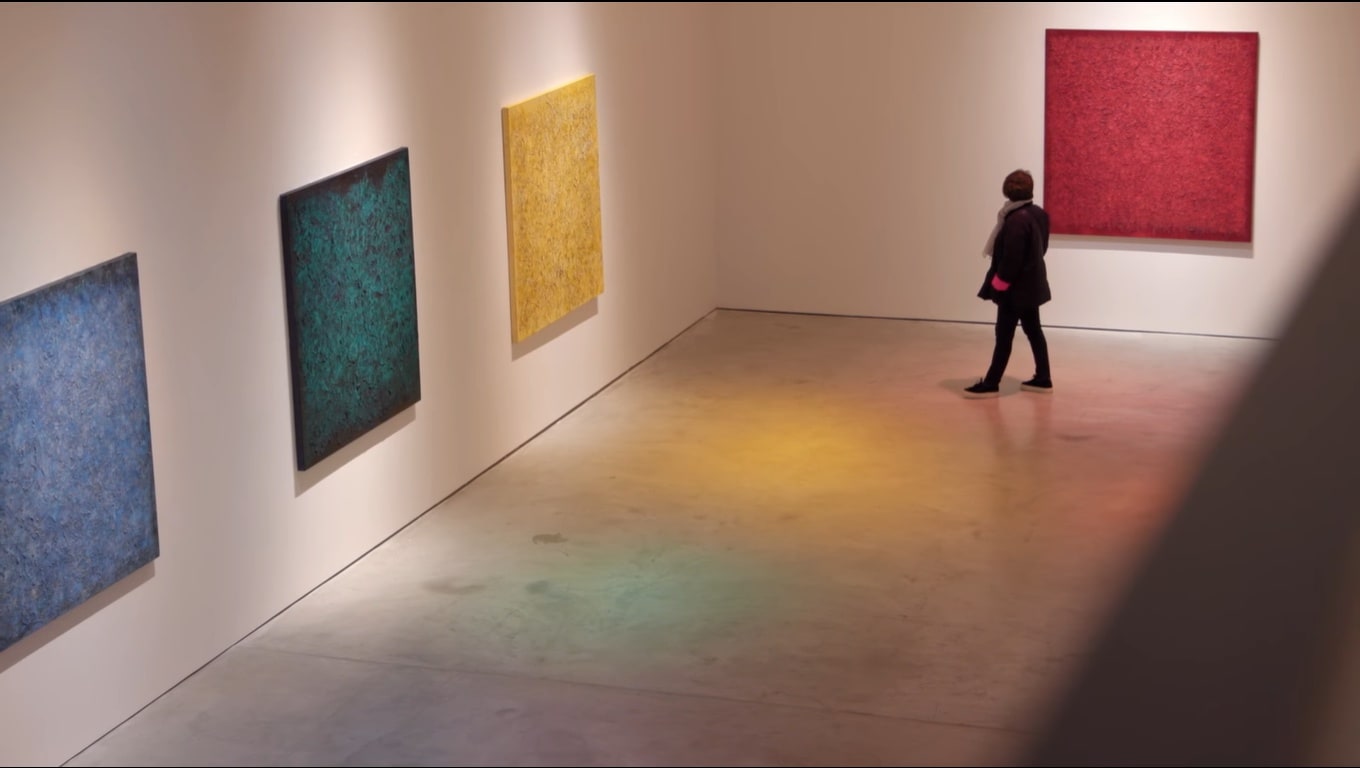Doors of Perception: Chiang Yomei Solo Exhibition
The painter, any painter, while he is painting, practices a magical theory of vision. He is obliged to admit that objects before him pass into him or else that, according to Malebranche’s sarcastic dilemma, the mind goes out through the eyes to wander among objects; for he never ceases adjusting his clairvoyance to them.
— Eye and Mind, Phenomenologist Maurice Merleau-Ponty
To understand Chiang Yomei’s art practice through Buddhist philosophy, cognitive psychology, and quantum entanglement theory is simultaneously the most straightforward and most arduous way. In her exploration of the immaterial through poetry and painting, the artist transforms personal musings through different media, from color to sound, creating sensory experiences rooted in the artist’s artistic vocabulary.
In Buddhism, mind represents the human conscious activity; matter refers to the human body and all material phenomena in nature. As the 8th-century Buddhist Master Zhanran once said, “Since both the environment and the person are present as a single moment of experience, they cannot be divided into agent and patient. … Mind creates matter, matter creates mind; I am performing the world, the world is performing me. I am thinking myself in the sky, the sky is thinking itself in me.” In Phenomenology of Perception, Merleau-Ponty saw the human body as ‘a perceiving thing,’ intricately intertwined and mutually engaged with the world. It embodies the Buddhist concept of emptiness[1], that mind and matter are one.
Another philosophical elucidation of all matter as the manifestation of vibration frequency[2] comes from quantum theory founder Max Planck, who once said, “There is no matter as such! All matter originates and exists only by virtue of a force which brings the particles of an atom to vibration and holds this most minute solar system of the atom together.” The change in vibration frequency influences the spectrums of color and sound, as well as the fundamental transformation of matter at the quantum level, further altering reality as we perceive it.
The vibration theory appears in Indian yoga and Tibetan Buddhism as well. There are seven primary chakras located along the spinal cord. Each chakra is associated with a particular color/vibration/sound, a natural element, a bodily organ and an emotion. In Kundalini yoga, the practitioner meditates on the seven colors — red, orange, yellow, green, blue, indigo, and violet to achieve harmony and transcendence.
On view in Doors of Perception, Chiang Yomei’s latest solo exhibition, the “Vibration” series documents the artist’s journey where her consciousness metamorphoses into vibrant colors rendered in oil paint and mixed media through the artist’s physical labor. Using a soft tube filled with a viscous mixture of sand and adhesive, the artist repeatedly inscribes on canvas the 260 characters of the Heart Sutra, until the canvas is filled with legible and illegible overlapped text. As the text dries, she incorporates substances such as her own hair, incense ash, seeds, and coarse fibers, while simultaneously using her hands and tools to destroy — through attrition, mottling, and cracking, or even by completely peeling off the surface material — until what remains seems like the remnants of erosion.
Blurring the boundary between subject and object, the artist allows her amplified senses to resonate with the colors, evoking different states of mind manifested through the seven chakras, thereby triggering viewers’ perceptual responses and perhaps ushering them through the doors of perception.
“The Sound of Emptiness” works-on-paper series evokes many a microcosm, where watercolor, pencil, and gouache render primordial cosmic energy in organic abstract shapes of varying tones of blue or pink, embodying “three thousand worlds immanent in a conscious instant” and quietly divulging the metaphysical mystery of the universe.
To arise from nothingness and then return to nothingness; through seemingly futile physical labor the artist distills all her ineffable experiences into chromatic renditions. She expands personal experience by allowing her thoughts and perceptions to coalesce in the art-making process, and in so doing forges a connection with the universe where she paves a path to the infinite through the doors of perception. Such is exemplified in “Sky Dance,” the artist’s latest works-on-paper series, where the vibrant prints made by the artist’s feet, dipped in paint, stepping directly onto the paper, are reminiscent of her poem Your Steps are Golden:
Your steps are golden
but the soles of your feet
are stained the blood of the earth
Your blood
A thousand cuts
Your flayed flesh
Covered in ash
They say
Gold has no shadow
They say one day
gold
will be flowing through your blackened veins
like fire




















